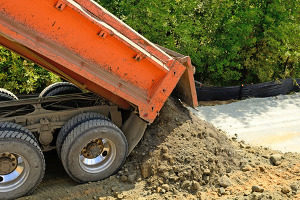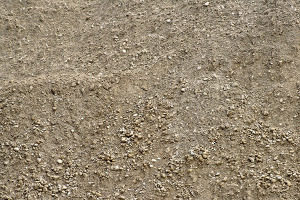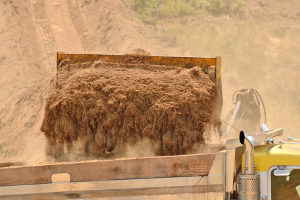Fill dirt plays a crucial role in a variety of construction and landscaping projects. Whether you’re filling in a depression, stabilizing a structure, or shaping the land to create slopes or mounds, choosing the right type of fill dirt is essential.
Unlike topsoil, which is rich in organic material and nutrients, fill dirt is a composition of subsoil—devoid of organic matter. This is important because organic material decomposes over time, creating pockets of gas and air that can compromise the compaction and stability of your project.
If you’re planning a construction, landscaping, or home improvement project, understanding the different types of fill dirt, their uses, and how to calculate the right volume will help you save time, money, and effort.
Types of Fill Dirt and Their Uses
Fill dirt comes in various types, each suited for specific applications. The type of fill dirt you choose will depend on the nature of your project, as different materials have different levels of stability, compaction, and drainage capabilities.
Coarse-Grain Soil (Gravel and Sand Fill Dirt)
Coarse-grain soil is a mix of gravel and sand and is best known for its excellent drainage properties. Since it offers good compaction with little plasticity, it is commonly used in applications where wet conditions could otherwise weaken the soil.
Common uses include construction of tunnels and culverts, road maintenance and improvements, and creating a base for retaining walls. The advantages of coarse-grain fill dirt include excellent drainage, ideal structural foundations, and resistance to heavy equipment pressure. The main disadvantage is that it is not ideal for projects requiring high compaction.
Clay Fill Dirt
Clay is a popular type of fill dirt because of its high compaction ability. However, it absorbs and retains moisture, which can expand and contract due to temperature and weather conditions, potentially causing instability in the structures it supports.
Common uses for clay fill dirt include building foundations for houses, creating ponds or water-retaining structures, and landscaping slopes and embankments. The advantages of clay fill dirt include strong compaction and suitability for constructing solid, level surfaces. The main disadvantages are that it expands and contracts with moisture fluctuations and can lead to foundation instability if not properly compacted.
Rock Fill Dirt
 Rock fill dirt consists of larger stones and rocks, providing the best foundation stability but requiring significant labor for installation. This type of fill is useful when building bridges, highways, or any high-load-bearing structures.
Rock fill dirt consists of larger stones and rocks, providing the best foundation stability but requiring significant labor for installation. This type of fill is useful when building bridges, highways, or any high-load-bearing structures.
Common uses for rock fill dirt include large-scale construction projects, supporting heavy-duty foundations, and preventing soil erosion. The advantages of rock fill dirt include extreme durability and suitability for high-load-bearing structures. The main disadvantages are that it is expensive and labor-intensive to install.
Why It’s Important to Measure the Volume of Fill Dirt
One of the biggest challenges when working with fill dirt is ensuring that you have the right amount for your project. Ordering too little fill dirt can delay your work and increase costs for additional deliveries while ordering too much results in wasted materials and unnecessary expenses.
Determining the correct volume of fill dirt helps avoid unnecessary project delays, prevents extra costs due to underordering, and minimizes waste and disposal issues. Failing to calculate the right volume can lead to extra logistics costs and project downtime.
How to Calculate the Volume of Fill Dirt
The volume of fill dirt needed largely depends on the shape of the area to be filled. Below are some easy-to-follow formulas and examples for different shapes.
Calculating Fill Dirt for a Rectangular Area
- Measure the length, width, and depth of the area you need to fill. Ensure that all units are the same, such as inches, feet, or yards.
- Use the formula for finding volume: Volume = Length x Width x Depth.
- Since fill dirt is sold in cubic yards, convert your measurement by dividing the cubic inches by 46,565 (since 1 cubic yard = 46,565 cubic inches).
For example, given that the length is 120 inches, the width is 60 inches, and the depth is 30 inches, the volume calculation would be:
- 120 inches x 60 inches x 30 inches = 216,000 cubic inches
- 216,000 cubic inches ÷ 46,565 = 4.63 cubic yards
It is recommended to always add a small margin of error—about two extra cubic yards—to account for compaction and unforeseen variables.
Calculating Fill Dirt for a Circular Area
 Measure the diameter and depth of the hole.
Measure the diameter and depth of the hole.- Use the cylinder volume formula: Volume = π x Radius² x Depth.
- Convert cubic inches to cubic yards by dividing by 46,565.
For example, given that the diameter is 60 inches (making the radius 30 inches) and the depth is 30 inches, with π being 3.1416, the volume calculation would be:
- 3.1416 x (30 inches)² x 30 inches = 84,834 cubic inches
- 84,834 cubic inches ÷ 46,565 = 1.82 cubic yards
Measurements should always be rounded up slightly to ensure that there is enough material for the project.
What If Your Project Has an Irregular Shape?
For irregularly shaped areas, calculating fill dirt volume can be tricky. Instead of estimating and risking an incorrect order, consider hiring a professional or consulting a dirt supplier. Many suppliers, including Dirt Connections, offer free volume calculation services to help determine the exact amount needed for your project.
Reach Out to the Northern Virginia Fill Dirt Experts
Fill dirt is a crucial component of any construction or landscaping project, and understanding its different types, uses, and volume calculations is essential for a smooth operation. By choosing the right type of fill dirt and correctly measuring how much you need, you can avoid delays, extra costs, and material waste.
If you need affordable, high-quality fill dirt for your next project, Dirt Connections has you covered. Reach out today to order our premium fill dirt or with any quantity questions.









































